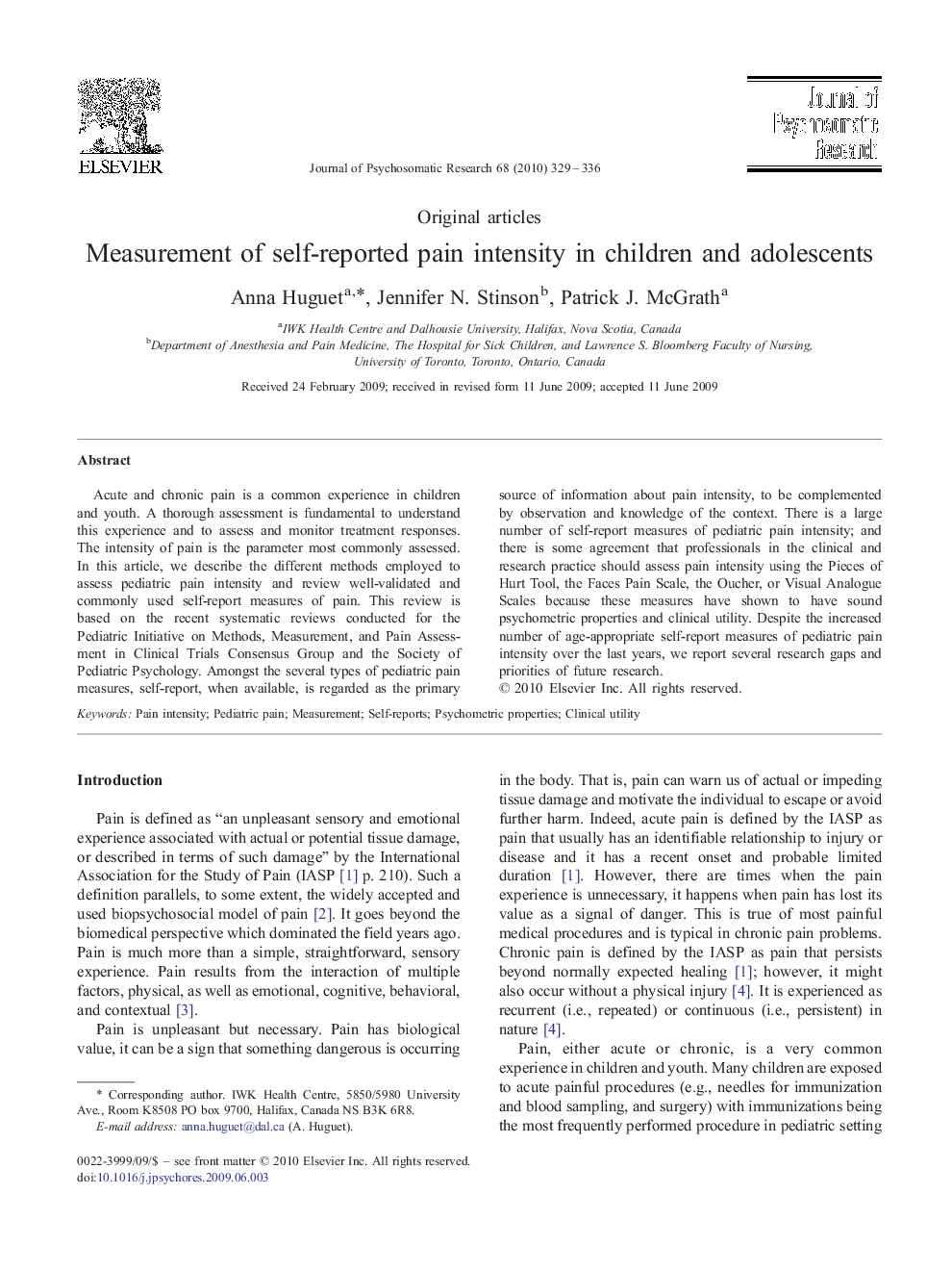| Article ID | Journal | Published Year | Pages | File Type |
|---|---|---|---|---|
| 950230 | Journal of Psychosomatic Research | 2010 | 8 Pages |
Acute and chronic pain is a common experience in children and youth. A thorough assessment is fundamental to understand this experience and to assess and monitor treatment responses. The intensity of pain is the parameter most commonly assessed. In this article, we describe the different methods employed to assess pediatric pain intensity and review well-validated and commonly used self-report measures of pain. This review is based on the recent systematic reviews conducted for the Pediatric Initiative on Methods, Measurement, and Pain Assessment in Clinical Trials Consensus Group and the Society of Pediatric Psychology. Amongst the several types of pediatric pain measures, self-report, when available, is regarded as the primary source of information about pain intensity, to be complemented by observation and knowledge of the context. There is a large number of self-report measures of pediatric pain intensity; and there is some agreement that professionals in the clinical and research practice should assess pain intensity using the Pieces of Hurt Tool, the Faces Pain Scale, the Oucher, or Visual Analogue Scales because these measures have shown to have sound psychometric properties and clinical utility. Despite the increased number of age-appropriate self-report measures of pediatric pain intensity over the last years, we report several research gaps and priorities of future research.
